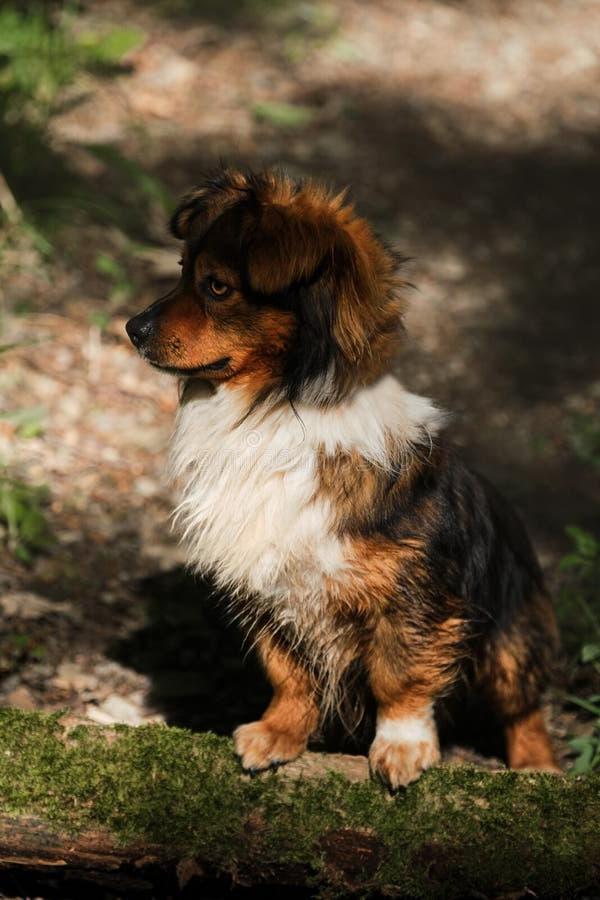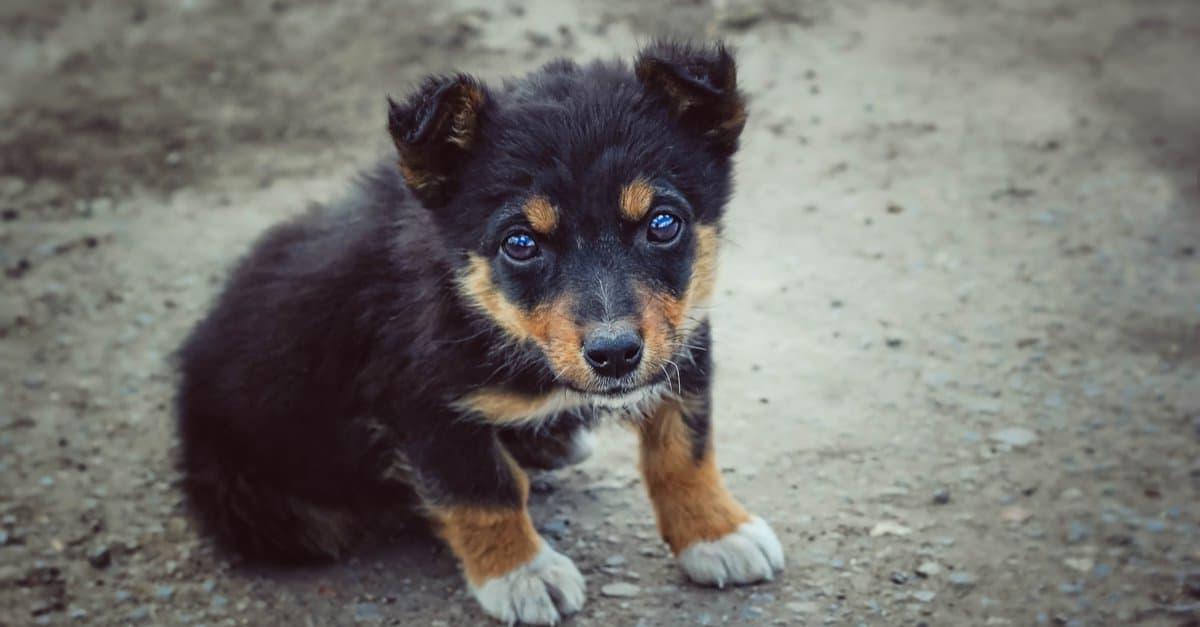- Breed Category: Mixed breed
- Country of Origin: Worldwide
- Average Height: Varies widely, 30-60 cm (12-24 in)
- Average Weight: Varies widely, 10-30 kg (22-66 lbs)
- Average Life Span: 10-15 years
- Grooming Requirements: Low to moderate
- Exercise Requirements: Moderate to high
- Coat Type: Varies, often mixed
- Coat Color Variations: Any colour possible
- Shedding Level: Varies, often moderate
- Ear Type: Varies, often mixed
- Tail Type: Varies, often mixed
- Temperament: Loyal, adaptable, friendly
- Intelligence Level: Varies, generally high
- Barking Tendency: Varies, often moderate
- Compatibility with Children: Generally good
- Compatibility with Other Pets: Generally good
- Training Ease: Varies, often moderate
- Common Health Issues: Generally fewer than purebreds
- Dietary Needs: Balanced diet, varies by size
- Energy Level: Moderate to high
- Drooling Tendency: Varies, often low
- Sensitivity to Weather: Varies, often moderate
- Overall Maintenance Level: Moderate
- Original Purpose: Companion, varies by mix
- Apartment Friendly: Yes, if exercised regularly
- Best Suited For: Families, active individuals
- Cost of Ownership: Moderate
- Unique Traits: Diverse appearances and temperaments
- Cultural Significance: Often seen as resilient pets
- Popularity Rank: Increasingly popular
Challenge a Common Assumption: When you think of dog breeds, you might picture purebreds with their distinct looks and pedigrees. But what about mongrels? Often overlooked, these mixed-breed dogs are a fascinating blend of various breeds, each with its own unique charm.
Mongrels, or mutts as they’re affectionately known, are dogs of mixed ancestry. They don’t belong to a single breed, and that’s what makes them special. This article aims to shed light on their characteristics, benefits, and care needs.
Historically, mongrels have been around as long as dogs themselves. They are the result of natural breeding, often without human intervention, leading to a diverse gene pool that contributes to their robust health and adaptability.
The Natural Development of Mongrel Dogs

Role in Various Cultures and Societies
Mongrel dogs have played diverse roles across cultures. In some societies, they are seen as loyal companions, while in others, they serve as working dogs, helping with tasks like herding or guarding. Their adaptability and resilience make them valuable in many settings, often filling roles that purebred dogs might not handle as well.
Historical Significance and Perception Changes Over Time
Historically, mongrels were often seen as lesser than their purebred counterparts. However, perceptions have shifted. Today, many people appreciate their unique qualities and the genetic diversity they bring. This change in perception highlights a growing understanding of the benefits of mixed-breed dogs, including their often superior health and adaptability.
Physical Characteristics
Physically, mongrels are a mixed bag. They can vary greatly in size, coat type, and colour, reflecting their diverse ancestry. This variety means that each mongrel is truly one-of-a-kind, with a look and personality all their own. Their unique appearance is part of their charm, making them stand out in a crowd.
Appearance and Unique Traits
Mongrels come in all shapes and sizes, a testament to their mixed heritage. You might find one with a sleek, short coat or another with a fluffy, long one. Their coat colours and markings are just as varied, ranging from solid hues to intricate patterns. This diversity means no two mongrels look exactly alike, making each one a unique masterpiece.
Thanks to their mixed ancestry, mongrels often boast unique physical traits. Some might have the sturdy build of a working dog, while others might inherit the graceful gait of a sighthound. This blend of characteristics not only adds to their charm but also contributes to their overall health and resilience.
Temperament and Behaviour
When it comes to temperament, mongrels are just as diverse as their looks. Generally, they are known for their friendly and adaptable nature. Many mongrels are quick learners, eager to please, and can fit into a variety of lifestyles. Their behaviour often reflects the best traits of their mixed lineage, making them wonderful companions for families, singles, and seniors alike.
Personality and Suitability as a Family Pet

Typical Personality Traits
Mongrels are a delightful mix of diversity, adaptability, and intelligence. Their varied backgrounds often result in a dog that’s quick to learn and eager to please. This adaptability makes them suitable for a range of environments, from bustling city apartments to sprawling rural properties. Their intelligence means they can pick up on cues and commands with ease, making them a joy to train.
Suitability as a Family Pet and Companion
As family pets, mongrels shine. Their diverse genetic makeup often results in a balanced temperament, making them great companions for families of all sizes. They tend to form strong bonds with their human families, offering loyalty and affection in spades. Whether you’re a single person or have a bustling household, a mongrel can fit right in.
Interaction with Children and Other Animals
Mongrels are generally good with children, often displaying patience and gentleness. Their friendly nature usually extends to other animals as well, making them a harmonious addition to multi-pet households. Of course, early socialisation is key to ensuring they get along with everyone.
Training and Exercise Needs
Training a mongrel can be a rewarding experience. Their intelligence and eagerness to please make them responsive to positive reinforcement techniques. Regular exercise is important to keep them healthy and happy, but their adaptable nature means they can adjust to different activity levels. Whether it’s a daily walk or a game of fetch in the backyard, they’re usually up for it.
Understanding and Caring for Mongrel Dogs

Importance of Understanding Individual Traits
Each mongrel is a unique blend of traits, making it essential to understand their individual characteristics. This understanding helps in tailoring their care and training to suit their specific needs. Observing their behaviour and preferences can provide insights into their personality, making it easier to create a nurturing environment.
Recommended Training Techniques for Mixed Breeds
Training mongrels can be a delightful journey. Positive reinforcement techniques work wonders, as these dogs are often eager to learn and please. Consistency and patience are key. Short, engaging training sessions keep them interested and help reinforce good behaviour.
Exercise Requirements and Activities They Enjoy
Mongrels thrive on regular exercise, which keeps them physically fit and mentally stimulated. They enjoy a variety of activities, from brisk walks to playful games of fetch. Tailoring exercise routines to their energy levels ensures they remain happy and healthy.
Health and Lifespan
Thanks to their diverse genetic makeup, mongrels often enjoy robust health and a longer lifespan compared to some purebreds. Regular vet check-ups and a balanced diet are crucial in maintaining their well-being. With proper care, these dogs can be loyal companions for many years.
Health and Care for Mongrel Dogs

Common Health Issues and Benefits of Genetic Diversity
Mongrels often benefit from a diverse gene pool, which can lead to fewer genetic health issues compared to purebreds. This genetic diversity often results in a stronger immune system and a lower risk of hereditary diseases. However, like all dogs, they can still face common health problems such as dental issues or obesity, so regular vet visits are essential.
Average Lifespan and Tips for Keeping Them Healthy
With proper care, mongrels can live long, healthy lives, often reaching 12 to 15 years or more. To keep them thriving, ensure they have a balanced diet, regular exercise, and mental stimulation. Routine vet check-ups and vaccinations are also key to catching any potential health issues early.
Preventative Care Recommendations
Preventative care is crucial for mongrels. Regular dental cleanings, flea and tick prevention, and maintaining a healthy weight are all important. Keeping up with vaccinations and heartworm prevention will also help ensure they stay in top shape.
Grooming and Maintenance
Grooming needs for mongrels can vary widely depending on their coat type. Regular brushing helps keep their coat healthy and reduces shedding. Bathing should be done as needed, and don’t forget to check their ears and trim their nails regularly. Tailoring grooming routines to their specific needs will keep them looking and feeling their best.
Coat Care and Grooming for Mongrel Dogs

Coat Care and Grooming Routines for Various Coat Types
Mongrels can have a wide range of coat types, from short and sleek to long and fluffy. For short-haired mongrels, a weekly brush is usually enough to keep their coat looking tidy and to remove loose hair. Long-haired mongrels, on the other hand, may need more frequent brushing to prevent tangles and mats. Regular grooming not only keeps their coat healthy but also provides a great opportunity to check for any skin issues or parasites.
Shedding and Grooming Tips for Mixed Breeds
Shedding can vary greatly among mongrels, depending on their genetic makeup. During shedding seasons, more frequent brushing can help manage loose hair and keep your home cleaner. A good quality brush suited to their coat type can make a big difference. Regular baths, using a gentle dog shampoo, can also help reduce shedding and keep their coat fresh.
Diet and Nutrition
A balanced diet is crucial for the health and well-being of mongrels. High-quality dog food that meets their nutritional needs is essential. Consider their age, size, and activity level when choosing their diet. Some mongrels may have specific dietary needs based on their unique genetic makeup, so consulting with a vet can provide guidance. Fresh water should always be available, and treats should be given in moderation to maintain a healthy weight.
Nutritional Needs for Optimal Health

Foods to Include and Avoid
For mongrels, a balanced diet is key. Include high-quality proteins like chicken or fish, and ensure they get enough healthy fats and carbohydrates. Vegetables and fruits can be great additions, providing essential vitamins and minerals. Avoid foods high in artificial additives, preservatives, and fillers, as these can lead to health issues.
Feeding Schedules and Portion Recommendations
Establishing a regular feeding schedule helps maintain a healthy weight and digestion. Typically, adult mongrels do well with two meals a day, while puppies may need three to four smaller meals. Portion sizes depend on their size, age, and activity level, so it’s wise to consult with a vet for tailored advice.
Fun Facts and Trivia
Did you know mongrels are often healthier than purebreds? Their genetic diversity can lead to fewer hereditary health issues. Plus, mongrels have been known to excel in agility and obedience competitions, showcasing their intelligence and versatility. They’re truly a testament to the beauty of mixed heritage.
Interesting Tidbits and Famous Mongrels
Interesting Tidbits about Mongrel Dogs
Mongrels, with their diverse backgrounds, often surprise us with their unique traits. Did you know that their mixed heritage can lead to a wider range of skills and abilities? This makes them incredibly versatile, whether they’re excelling in agility courses or simply being the best couch companion. Their genetic diversity often results in fewer health issues, which is a big plus for those looking for a long-term furry friend.
Famous Mongrels in Media or History
Mongrels have made their mark in history and media, proving that you don’t need a pedigree to be a star. One of the most famous mongrels is Laika, the first dog in space, who captured hearts worldwide. In the realm of fiction, the beloved character of Tramp from Disney’s “Lady and the Tramp” is a charming mongrel who wins over audiences with his street-smart ways. These dogs remind us that charm and talent aren’t limited to purebreds.
Final Thoughts

Mongrels embody the beauty of diversity and resilience. Their unique blend of traits makes them adaptable and loyal companions. Embracing a mongrel means welcoming a pet with a rich genetic tapestry, often leading to robust health and a delightful personality. As perceptions shift, more people are discovering the joys of these mixed-breed dogs, appreciating their individuality and charm. Consider adopting a mongrel and experience the joy of a truly one-of-a-kind companion.
